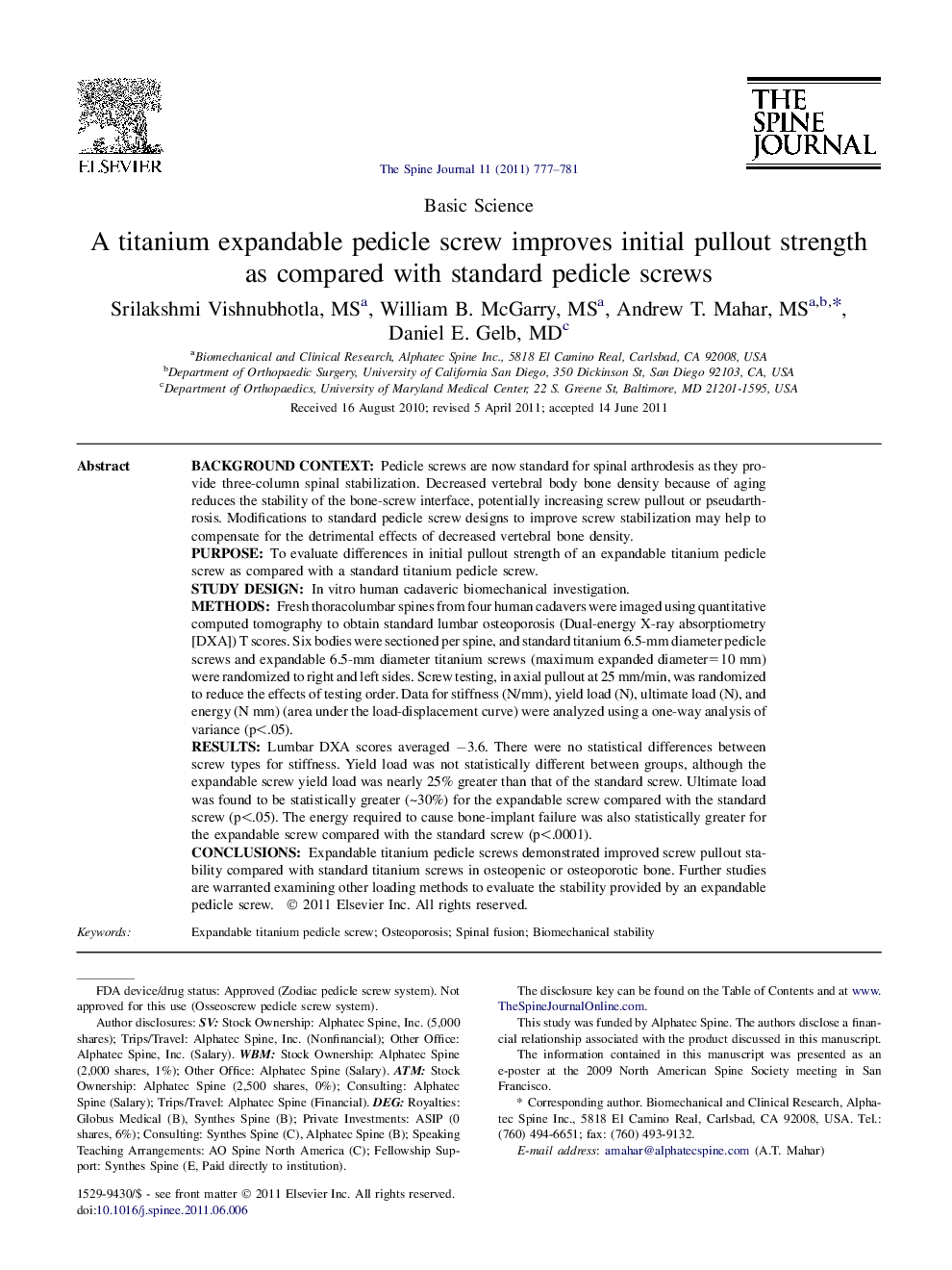| Article ID | Journal | Published Year | Pages | File Type |
|---|---|---|---|---|
| 4098741 | The Spine Journal | 2011 | 5 Pages |
Background contextPedicle screws are now standard for spinal arthrodesis as they provide three-column spinal stabilization. Decreased vertebral body bone density because of aging reduces the stability of the bone-screw interface, potentially increasing screw pullout or pseudarthrosis. Modifications to standard pedicle screw designs to improve screw stabilization may help to compensate for the detrimental effects of decreased vertebral bone density.PurposeTo evaluate differences in initial pullout strength of an expandable titanium pedicle screw as compared with a standard titanium pedicle screw.Study designIn vitro human cadaveric biomechanical investigation.MethodsFresh thoracolumbar spines from four human cadavers were imaged using quantitative computed tomography to obtain standard lumbar osteoporosis (Dual-energy X-ray absorptiometry [DXA]) T scores. Six bodies were sectioned per spine, and standard titanium 6.5-mm diameter pedicle screws and expandable 6.5-mm diameter titanium screws (maximum expanded diameter=10 mm) were randomized to right and left sides. Screw testing, in axial pullout at 25 mm/min, was randomized to reduce the effects of testing order. Data for stiffness (N/mm), yield load (N), ultimate load (N), and energy (N mm) (area under the load-displacement curve) were analyzed using a one-way analysis of variance (p<.05).ResultsLumbar DXA scores averaged −3.6. There were no statistical differences between screw types for stiffness. Yield load was not statistically different between groups, although the expandable screw yield load was nearly 25% greater than that of the standard screw. Ultimate load was found to be statistically greater (∼30%) for the expandable screw compared with the standard screw (p<.05). The energy required to cause bone-implant failure was also statistically greater for the expandable screw compared with the standard screw (p<.0001).ConclusionsExpandable titanium pedicle screws demonstrated improved screw pullout stability compared with standard titanium screws in osteopenic or osteoporotic bone. Further studies are warranted examining other loading methods to evaluate the stability provided by an expandable pedicle screw.
